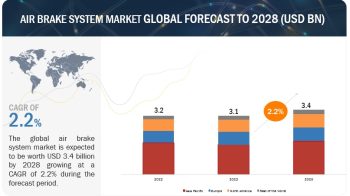The construction adhesives market is projected to reach USD 11.60 billion by 2022, at a CAGR of 5.0% from 2017 to 2022. The market is mainly driven by factors such as the increased demand for construction adhesives from the residential housing and infrastructure industries and in ASEAN and MEA countries and safe and easy application of construction adhesives.
Download PDF Brochure at https://www.marketsandmarkets.com/pdfdownload.asp?id=168524253
New product launches was the key strategy adopted by the industry players to grow in the construction adhesives market. This strategy accounted for a share of 51% of the total growth strategies adopted by the key players between 2013 and 2017. Companies are focusing on new product launches to broaden their product portfolio to cater to the growing demand from consumers. Moreover, companies are focusing on acquisitions and investments & expansions in emerging countries, such as India, China, Indonesia, and Brazil due to the rising demand for construction adhesives from these countries. These two strategies accounted for a combined share of 49% of the total growth strategies adopted by the key players between 2013 and 2017.
Europe was the most active region between 2013 and 2017, in terms of strategic initiatives. New product launches was the most preferred strategy in the region and was majorly adopted by manufacturers to strengthen their product portfolio in the global construction adhesives market. Companies such as Henkel (Germany), Bostik (France), Sika (Switzerland), and BASF (Germany) are the key players in Europe. Major companies in the North America region are 3M (US), H.B. Fuller (US), Dow Chemical (US), DAP Products (US), Franklin International (US), Illinois Tool Works (US), and Avery Dennison (US).
Some of the key manufacturers, such as Henkel (Germany), 3M (US), Bostik (France), Sika (Switzerland), H.B. Fuller (US), BASF (Germany), Dow Chemical (US), DAP Products (US), Franklin International (US), Illinois Tool Works (US), Avery Dennison (US), etc., have been profiled in this report.
Sika, H.B. Fuller, and Bostik are the most active players in the global construction adhesives market. These companies together accounted for the largest share of the total developmental strategies undertaken in the construction adhesives market between 2013 and 2017.
In August 2017, Sika acquired ABC Sealants, a leading Turkey-based manufacturer of adhesive & sealants. The acquisition will strengthen Sika’s market position in Turkey and further establish Sika as a comprehensive supplier of construction adhesives for interior finishing applications. In addition, the acquired production site will not only improve Sika’s ability to serve customers in the Turkey market but also function as distribution and production hub for the Middle East and Africa, reinforcing the supply chain in the region.
H.B. Fuller is another key manufacturer of construction adhesives. In October 2017, the company acquired Royal Adhesives & Sealants (US). This acquisition will offer customers a broader product portfolio and expanded development and production capabilities.
Bostik, in May 2016, expanded its manufacturing presence for cementitious products, including ceramic tile adhesives, tile grouts, floor leveling compounds, and wall finishing products, all based on the firm’s polymer modified binder technology in Seremban, Malaysia. This expansion enabled Bostik to serve the construction customers better in central Malaysia, including Kuala Lumpur, North Malaysia, and Sabah.
The construction adhesives market is projected to reach USD 11.60 billion by 2022, at a CAGR of 5.0% from 2017 to 2022. The Asia Pacific is a leading market for construction adhesives, in terms of value. Countries such as India, Indonesia, China, Malaysia, and Thailand are witnessing an increase in the use of construction adhesives in the region.
APAC is expected to be the fastest-growing region for construction adhesives market, owing to high investments being made in the building & construction industry of the region, which uses construction adhesives. The growth of the building & construction industry in countries such as India and China have consequently led to an increase in the use of construction adhesives. Moreover, various companies in the market are shifting their production base to APAC due to the low cost of production and ease of serving emerging local markets. The region accounts for over 50% of the world’s population, making it an important region for global trade and commerce. Rapid development in the construction adhesives technology in developed as well as developing countries, such as China, India, Indonesia, Thailand, and Malaysia, are expected to fuel the growth of the APAC construction adhesives market.
China is estimated to lead the APAC construction adhesives market due to the growth in the population and the economy of the country. The India construction adhesives market is projected to grow at the highest rate during the forecast period.
Based on resin type, the PU segment of the construction adhesives market is expected to grow at the highest rate during the forecast period. The growth of this segment can be attributed to its significant contribution to the adhesive bonding technology, making available several different feedstock materials for the manufacturing of adhesives that exhibit a broad spectrum of performance characteristics. Based on their varied compositions, polyurethane adhesives are used in several applications in the construction industry.
Based on technology, the waterborne segment of the construction adhesives market is expected to grow at the highest rate during the forecast period. The waterborne segment accounts for more than half of the market size, in terms of volume. The waterborne technology is fortified in all the leading construction adhesives end-use sectors. Owing to increasing environmental concerns and stringent volatile organic compound (VOC) regulations, adhesive manufacturers are using the waterborne technology for the production of construction adhesives. This has fueled the growth of the waterborne adhesives market.
Based on end-use sector, the infrastructure segment is projected to grow at the highest rate during the forecast period. The demand for adhesives from the infrastructure sector of emerging countries is increasing due to the ongoing and proposed infrastructural development projects. The increasing focus of governments of these countries on infrastructural development projects, such as high-speed rail, road works, water transportation, airport development, and nuclear projects is driving the demand for construction adhesives.


